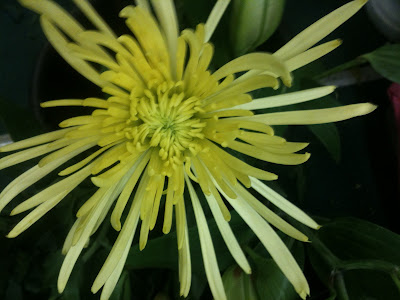 |
SPIRALS IN THE WORLD AROUND US
PLANTS
 | ||||||
| SPIRAL PATTERN IN AN ARTICHOKE SPIRAL PATTERN IN THE UNFOLDING PETALS OF AN IRIS  SPIRAL PATTERNS IN DAISIES AND SUNFLOWERS
SPIRAL PATTERN IN THE WAY LEAVES GROW AROUND A STEM
In mathematics, the Fibonacci numbers are the numbers in the following sequence: 0,1,1,2,3,5,8,13,21,34,55,89,144,… If you trace the squares of a piece of graph paper using the Fibonacci sequence you will create a pattern like this one: The side of each square equal the sum of the previous two squares. The squares become progressively larger following the Fibonacci sequence. Copy this pattern on to a piece of graph paper and continue to add squares, following this sequence until you run out of room. Next draw a spiral starting at the first number one and getting progressively larger as it arcs through each square. It should grow smoothly and touch two diagonally opposite corners on each square in the sequence. Congratulations! You have created your very own Fibonacci spiral. The rectangle that is formed by your Fibonacci sequence is known to mathematicians and artists as the golden rectangle. click here to learn more about the golden rectangle. |
WHAT IS THE CONNECTION BETWEEN THE SPIRALS IN PLANTS AND THE FIBONACCI SPIRAL IN MATHEMATICS?
WATCH THESE VIDEOS TO FIND OUT
Still confused? Click here to visit a website that does a pretty good job of explaining the math behind the videos you just saw.
Warning: There is a great deal of misinformation about the Fibonacci spiral on the Internet. The Fibonacci spiral is not found in nautilus shells, ram's horns, spiral galaxies or spider webs.
Occasionally, you might find a few numbers from the Fibonacci sequence in a ram's horn or a sea shell but no known animal consistently forms spirals in this manner the way plants do. Click here to visit an excellent website that debunks the most common myths about the Fibonacci spiral.
Spirals are beautiful and amazing in their own right but they do not hold the key to all the secrets of the universe as some would have you believe. Enjoy them for their beauty and mystery and let them inspire you to create magnificent art.


Watch this video of an artist drawing a rose:
Would you like step by step directions for how to draw a rose? Click here.
 |
Printable Worksheets Art activities based on the Fibonacci Spiral by Rachel Wintemberg,The Helpful Art Teacher |
PRINT OUT THIS HELPFUL POSTER
 |
| Incorporate the different types of rhythmic line designs into your spiral drawings to make your artwork more interesting to look at. The more detail you use, the more engaging your pictures will be. Click on the link below to see a diverse collection of spirals in art, architecture, computer generated design, sculpture and jewelry by many different artists. http://www.flickr.com/groups/spiral/ How will you use spirals in your art? Fibonacci Zoetrope Sculptures from Pier 9 on Vimeo. |

















































Best presentation on Spirals to use in a teaching setting I have ever seen!
ReplyDeleteVery very nice presentation and very helpful for teaching spirals in art. Thank you!
ReplyDeleteThank-you! Great Handouts!
ReplyDeleteI could not refrain from commenting. Well written!
ReplyDelete